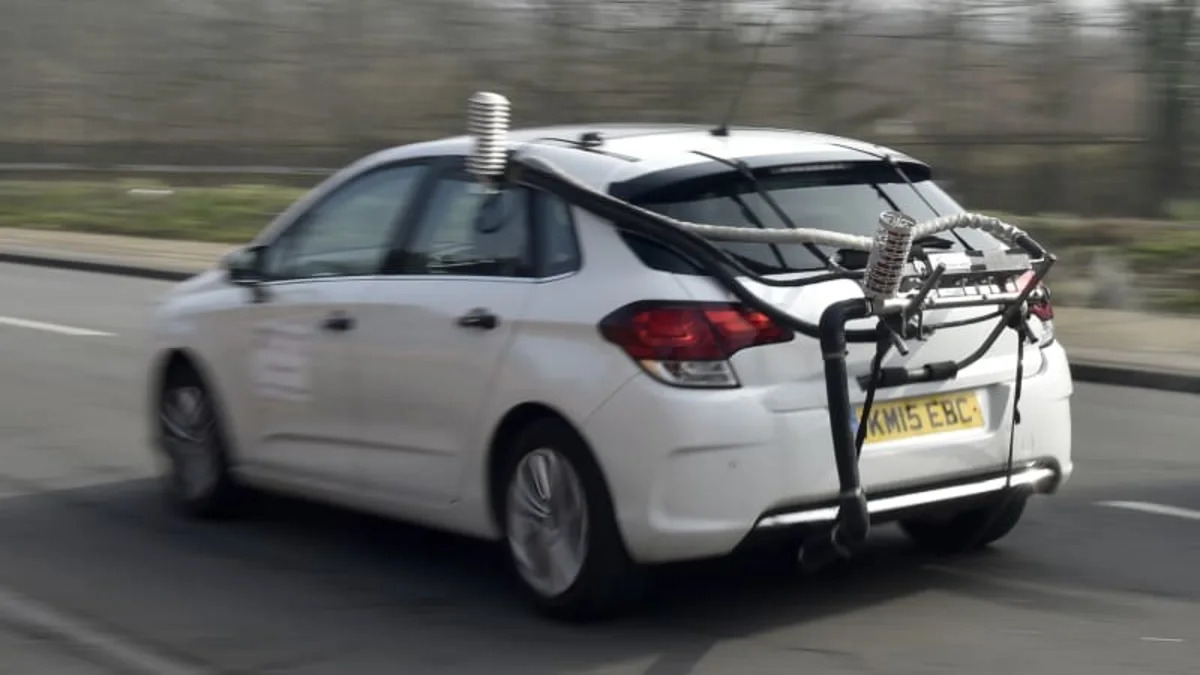A U.K.-based emissions testing company that has tested more than 500 vehicles in the U.S. since 2013 says it's found no discernible improvement in overall fuel economy and no decrease in CO² emissions, a key greenhouse gas. That's despite a wide range of newer engine technologies and improvements like turbocharging, stop-start systems, lightweight materials and eco-drive settings.
Emissions Analytics tells Automotive News (subscription required) there's a difference between lab testing and real-world performance, and that not all of these technologies help in the latter. The company plans to release its full findings on U.S. vehicles in early October.
Researchers measured carbon monoxide (CO) and dioxide (CO²); nitric oxide (NO) and nitrogen dioxide (NO²); oxides of nitrogen; total hydrocarbons; particulates; fuel economy; and fuel consumption. They used a portable emissions measurement system strapped like a bike rack to the back of vehicles, which they drove over an 88-mile course on public roads in Southern California.
Among the findings:
Related Video:
Emissions Analytics tells Automotive News (subscription required) there's a difference between lab testing and real-world performance, and that not all of these technologies help in the latter. The company plans to release its full findings on U.S. vehicles in early October.
Researchers measured carbon monoxide (CO) and dioxide (CO²); nitric oxide (NO) and nitrogen dioxide (NO²); oxides of nitrogen; total hydrocarbons; particulates; fuel economy; and fuel consumption. They used a portable emissions measurement system strapped like a bike rack to the back of vehicles, which they drove over an 88-mile course on public roads in Southern California.
Among the findings:
- Vehicles with engines smaller than 2 liters have essentially posted no change in fuel economy. Meanwhile, the fuel economy of engines between 2 and 3 liters, the most common, dropped by 8 percent, and fuel economy rose by 8 percent in engines of 3 liters or larger. The drop in economy for the most common engine class is problematic for overall CO² emissions in an era of cheap gasoline, when Americans are commuting longer distances but small-car sales are lagging.
- While the EPA's five-cycle test procedure tracks pretty closely with EA's real-world tests, automakers may be relying too heavily on "off cycle" credits given by the EPA for technologies like engine stop-start systems and "eco" driving modes that cut fuel consumption. Those systems aren't accounted for in the driving tests. That said, it's only logical that a car sitting at idle gets zero miles per gallon, while one that's turned off by a stop-start system is by definition economical.
- Turbocharged engines show large gaps between lab and real-world use, delivering big fuel savings when under low stress but becoming far less efficient once the turbos are engaged. In other words, these systems are driven with a light during testing, but real-world drivers engage the turbocharger far more often.
- Regular hybrids, which have gotten lost in the hype over plug-in hybrids and pure EVs, are among the best technologies in delivering fuel economy and cutting greenhouse gases.
Related Video:


Sign in to post
Please sign in to leave a comment.
Continue